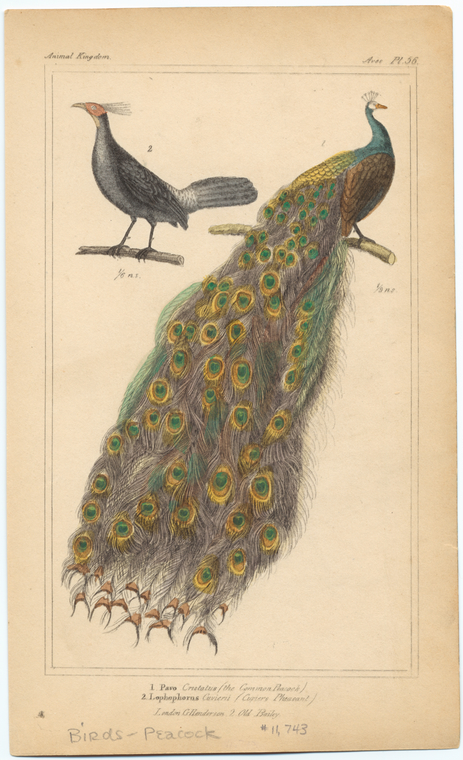Reader’s Den
The Reader's Den: Flannery O'Connor's "The Displaced Person"

In Flannery O'Connor's short story "The Displaced Person," originally published in the 1955 collection A Good Man is Hard to Find, racism, prejudice, and distrust take center stage.
Mrs. Shortley, who lives and works on Mrs. McIntyre's farm, is horrified when a family of Polish refugees, the Guizacs, moves on to the estate, aided by a local priest. Mr. Guizac (The Displaced Person) is a master mechanic, and as Mrs. McIntyre soon discovers, is "smart, thrifty, and energetic." As Mrs. Shortley sees it, he has come to drive her out of work and off the estate, and she begins a campaign to turn her employer against the newcomer.

- Seemingly always present is the farm's last remaining peacock, a holdover from the days of Mrs. McIntyre's first husband. Nobody pays him much mind, except for the priest, who admires his beauty. Why does O'Connor install the peacock as the silent observer of everything that goes on? Why is the priest the only one who appreciates him?
- It doesn't take Mrs. Shortley long to decide that Mr. Guizac has been sent by the devil to destroy her livelihood. "She had never given much thought to the devil for she felt that religion was essentially for those who didn't have the brains to avoid evil without it." We know that O'Connor was a religious writer, so what is she saying about Mrs. Shortley? That she is evil? Misguided? Ignorant?
- Mrs. Shortley tries to put ideas into Mrs. McIntyre's head about the Mr. Guizac, but does she unwittingly put her own ruin into motion by insinuating that the Polish family will need more money?
- After Mrs. Shortley's death, the story switches into Mrs. McIntyre's point of view, and the other major shift in the story comes soon after. Mrs. McIntyre is turned hopelessly against Mr. Guizac when she discovers that he has been planning to bring his niece to this country to marry one of the Black workers that live on the farm. She is so horrified by this concept, that she becomes obsessed with getting Mr. Guizac off her farm for good, despite his excellence as an employee. Why does this coincide with a general decline in Mrs. McIntyre's overall wellbeing, both physically and mentally?
- Both Mrs. Shortley and Mrs. McIntyre say and think terrible things about Mr. Guizac and about the Black employees on the farm. Which of the two women is the real villain in the story?
- Was Mr. Guizac's death planned by Mr. Shortley?
Thank you for joining us in The Reader's Den! Please leave your comments in the box below, and come back next week for a discussion of O'Connor's "A Good Man is Hard to Find."
Read E-Books with SimplyE
 With your library card, it's easier than ever to choose from more than 300,000 e-books on SimplyE, The New York Public Library's free e-reader app. Gain access to digital resources for all ages, including e-books, audiobooks, databases, and more.
With your library card, it's easier than ever to choose from more than 300,000 e-books on SimplyE, The New York Public Library's free e-reader app. Gain access to digital resources for all ages, including e-books, audiobooks, databases, and more.
If you don’t have an NYPL library card, New York State residents can apply for a digital card online or through SimplyE (available on the App Store or Google Play).
Need more help? Read our guide to using SimplyE.